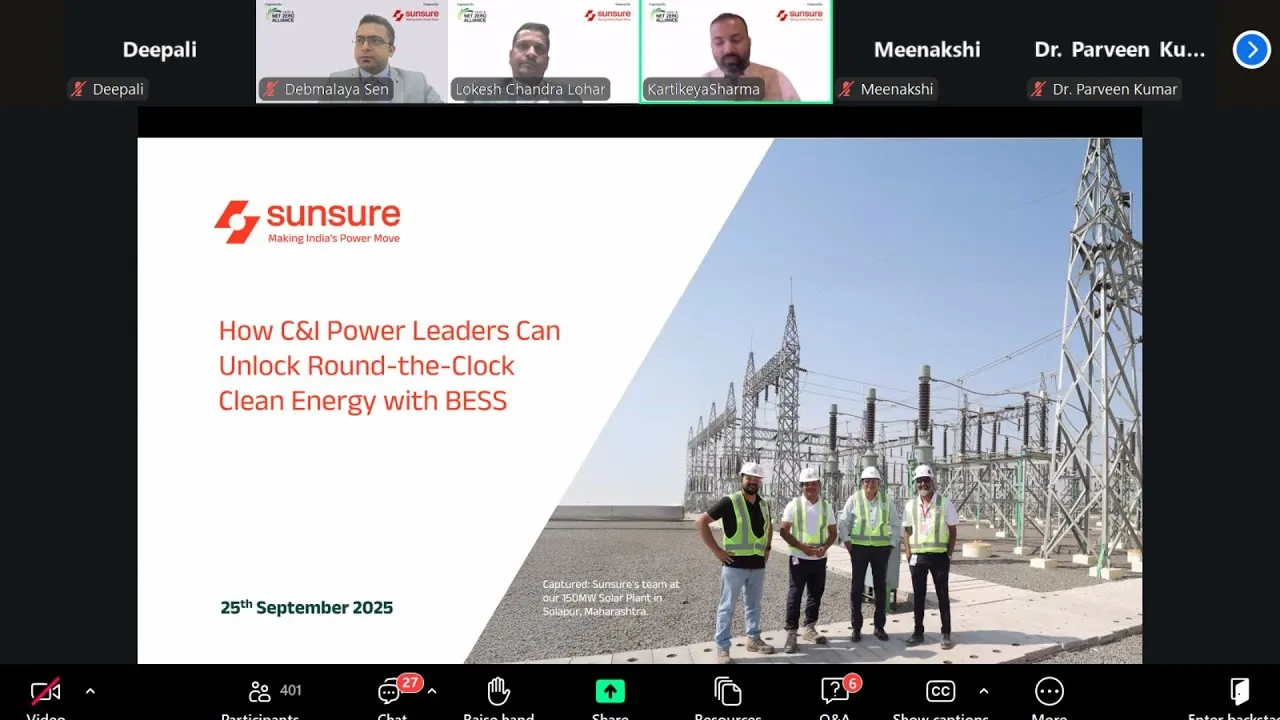Table of content
- COP27 and The Path to Net Zero Strategic Plan
- Implications for the Future
- Why Sunsure Energy?
- Conclusion
COP27-27th Conference of Parties to the Framework Convention on Climate Change fixed further development of climate policies worldwide. India submitted an updated Nationally Determined Contribution along with the enlarged national climate goals, the most significant of which is that the non-solar renewable power generation capacity is planned to be increased to five times by 2030. Such commitments demonstrate that India is assuming a more active leadership role in combating climate change.
COP27-27th Conference of Parties to the Framework Convention on Climate Change fixed further development of climate policies worldwide. India submitted an updated Nationally Determined Contribution along with the enlarged national climate goals, the most significant of which is that the non-solar renewable power generation capacity is planned to be increased to five times by 2030. Such commitments demonstrate that India is assuming a more active leadership role in combating climate change.
Net zero means to meet the net zero emission target. It simply means a level where there are emissions of greenhouse gasses in the atmosphere, which are being offset by the amount that is being sequestered. This may also be understood as the state wherein the greenhouse gasses being produced are taken out of the atmosphere. Accordingly, the strategic plan focuses on the following:
Net zero means walking the net zero emissions path. It signifies a state where greenhouse gas emissions are balanced by removals, achieving a net zero impact on the climate. This may also be understood as the state wherein the greenhouse gasses being produced is taken out of the atmosphere. Accordingly, the strategic plan focuses on the following:
The government’s target covers all major economic sectors, and the country will need to take a number of steps in the future to achieve it, including:
India will also need to mobilize over US $200 billion annually for the next 50 years to achieve its goal. The magnitude of the asset buildup and managing the transition’s human aspects will be the biggest challenge and opportunity for India’s economy in the coming decades.
Sunsure Energy is committed towards decarbonization and moving its clients towards the low carbon economy, to make them net zero emitters. This means that we are able to meet all service needs to accommodate renewable energy and we are able to connect all these services and create polymorphic or individually matching services for the customers.
By partnering with us, Sunsure Energy, you can get:
Our specialists employ effective approaches in developing the project, securing the funding, installing the equipment, and maintaining the installment – all in one package to transition to clean energy.
India’s vision of achieving net zero is an exemplary pointer that calls for collective participation of every citizen. Businesses have a chance to enhance the standard of the environment because a low-carbon future implies choices that make sustainable the provision of goods and services, support clean technologies, and foster innovation for the development of a sound economy. Sunsure Energy has been privileged to be part of this process, to support organizations in their quest to reach net zero.
India pledged net zero emissions by the year 2070, with an aim to expand non-fossil fuel energy capacity to 500 GW, meeting 50% of energy needs from renewables, reducing carbon emissions by one billion tonnes, and decreasing carbon intensity to less than
At COP27, India displayed an enhanced strategy of action against climate change. These included manifold increases in renewable energy capacity by 2030, among others, focused on sustainable development.
Net zero goals would need to be underpinned by a multi-pronged strategy that includes the share of renewables, enhancement of energy efficiency, hydrogen technology options, and sustainable mobility.
For India, COP27 is very important since it not only reiterated its commitment to climate action but also fleshed out its roadmap toward net zero. It nailed down India’s stature as a global climate leader.


